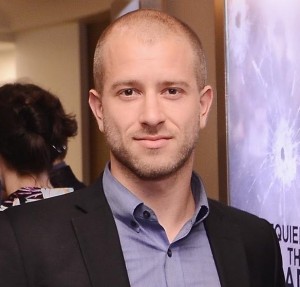Speaking hours after another high profile mass shooting—this one perpetrated at a community college in Oregon by a young man who shot 18 people, killing nine, before shooting and killing himself—President Obama seemed to be at the end of his rope.
On at least 10 previous occasions, he had stood behind the podium emblazoned with the presidential seal and consoled the nation after an act of horrific gun violence. This time he betrayed an unusual degree of exasperation, his voice rising, his words clipped. He seemed almost as unsettled by the too familiar motions of sorrow and regret and disgust as he did by the latest tragedy: “Somehow this has become routine: the reporting is routine, my response here at this podium ends up being routine, the conversation in the aftermath of it . . . We’ve become numb to this.”
When a body is numb, injuries do not communicate pain. The brain does not respond with a course of action. The muscles do not react in self-preservation. The same goes for the body politic: our democracy’s nervous system is made up of journalists and researchers and advocates who communicate information to policymakers, and the legislation they craft in response is the musculature of action. Our nation’s wellbeing depends on the smooth operation of these systems—and for too long the US has experienced gun violence as one in a coma.
We are racked with a spasm of concern after the outrage in Oregon, but the reality that 88 Americans are killed with guns on an average day does not typically rise to our societal consciousness, in part because policymakers have torn out the nervous system by which this daily toll would be perceived.
Congress has failed to appropriate the necessary funding for the Centers for Disease Control and Prevention to expand nationwide its platform for tracking policy relevant details of firearm related deaths: the National Violent Death Reporting System. The justice department is still bound by congressional fiat from freely sharing the “trace data” it collects on hundreds of thousands of guns recovered from crime scenes each year, which would otherwise help cities shine a light on traffickers arming criminals in their communities. The come and go of gun violence from the national stage does not reflect any variation in the continuous massacre of Americans, just the waxing and waning of our consciousness of it.
One way that Everytown for Gun Safety attempts to alter this is by establishing that individual shootings are part of a larger phenomenon. Although the shooting at the Oregon school was an aberrant act, it is just one of more than 150 school shootings in the US since 2013. In this context, policymakers might consider measures to prevent children from accessing improperly stored firearms in their homes, or to better define which individuals are too dangerous to possess guns at all. Everytown also maintains a comprehensive database of mass shootings in which four or more people were murdered with guns. Contrary to the conventional wisdom, the data show that these incidents are typically acts of domestic violence: in 57%, the shooter targeted a current or former intimate partner or family member. Moreover, the shooters were often prohibited from possessing guns due to prior criminal histories, and with better enforcement of our laws, might have been prevented from getting guns in the first place.
To take action to prevent these tragedies, gun violence must not only be perceived but also thoroughly understood. Journalists can contribute by contextualizing individual shootings in the broader context, seeking out explanatory details, and elevating promising strategies for prevention. And the scientific community must also be engaged. That’s why in 2015 Everytown devoted more than half of our research budget to supporting independent scientists making useful inquiries into the nature of gun violence in cities and states around the country. This is part of why we see an electorate who are increasingly educated about the issue, who care passionately about safety in their communities, and who are poised to vote gunsense champions into office next year. A number of presidential candidates have already proudly issued ambitious, evidence based platforms to reduce gun violence, an indication of how much has changed since just four years ago.
The need to strengthen our understanding of the costs and causes of gun violence needn’t be an excuse for inaction. There is already abundant evidence that requiring background checks for all gun sales can deter dangerous people from getting firearms and save lives. And last week Everytown also released more than a dozen executive actions that the president can take today to reduce gun violence, whether or not Congress escapes its persistent gridlock.
So the president was halfway right. Our society is numb. But we haven’t allowed gun violence to become routine—in America, gun violence has been routine for decades. It’s just that we’ve finally begun to recognize that fact. And that is the first step to doing something about it.
Ted Alcorn is the research director for Everytown For Gun Safety, a movement that works to end gun violence and build safer communities. He previously served as a policy analyst in the Office of the Mayor of New York City, and before that he lived in Beijing, China, as a Henry Luce scholar. He earned graduate degrees from the Johns Hopkins Bloomberg School of Public Health and its School for Advanced International Studies (SAIS), where he was a Bill & Melinda Gates Foundation fellow.
Competing interests: None declared.
